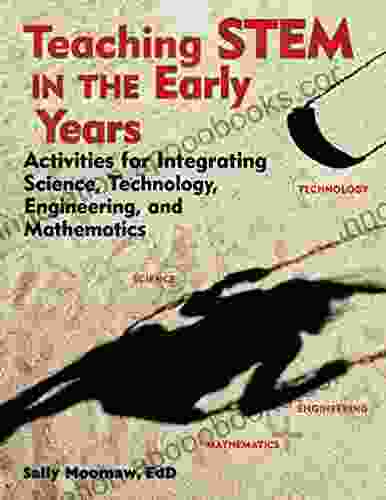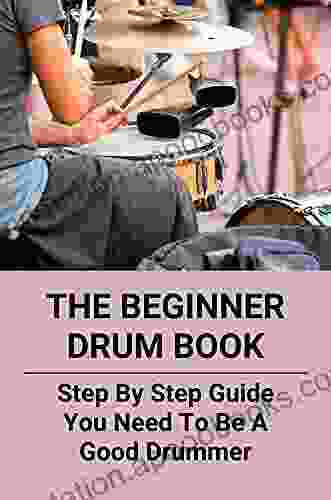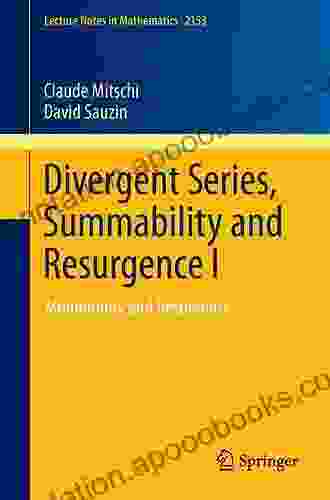Unlocking the Wonders of STEM Education in Early Years: A Comprehensive Guide for Educators

: The Importance of STEM in Early Childhood
In today's rapidly evolving technological landscape, equipping young learners with a solid foundation in science, technology, engineering, and mathematics (STEM) has become paramount. STEM education in early years plays a pivotal role in shaping children's curiosity, critical thinking skills, and problem-solving abilities, laying the groundwork for future success in these vital fields.
4.6 out of 5
| Language | : | English |
| File size | : | 9248 KB |
| Text-to-Speech | : | Enabled |
| Screen Reader | : | Supported |
| Enhanced typesetting | : | Enabled |
| Word Wise | : | Enabled |
| Print length | : | 240 pages |
This comprehensive guide provides a wealth of knowledge, practical strategies, and inspiring activities to help educators effectively integrate STEM into their early years curriculum. Through engaging exploration and hands-on experiences, we aim to ignite a passion for STEM in young learners, fostering their future growth and contribution to the world.
Chapter 1: Laying the Foundation: Key Concepts and Principles
1.1 Defining STEM Education and Its Relevance in Early Years
STEM education encompasses the interconnected disciplines of science, technology, engineering, and mathematics, offering a holistic approach to learning that fosters critical thinking, creativity, and problem-solving skills.
In early years, STEM education focuses on developing children's curiosity, exploration, and understanding of the world around them. Through age-appropriate activities and play-based learning, young learners gain a foundational understanding of STEM concepts and develop a positive attitude towards these subjects.
1.2 The Essential Role of Play-Based Learning
Play-based learning is a natural and effective way for young children to learn and develop. By engaging in hands-on activities, experiments, and imaginative play, children explore STEM concepts in a meaningful and enjoyable way.
Play-based learning fosters children's creativity, collaboration, and problem-solving skills. It also helps them develop a love of learning and a lifelong interest in STEM subjects.
Chapter 2: Engaging Activities and Lessons for Science
2.1 Exploring the Natural World
Science education in early years should focus on fostering children's curiosity about the natural world. Educators can plan activities that encourage children to observe, question, and investigate their surroundings.
Some engaging activities include nature walks, collecting and examining natural objects, and conducting simple experiments with plants and animals.
2.2 Hands-On Experiments and Investigations
Hands-on experiments and investigations allow children to actively engage with scientific concepts. By designing age-appropriate experiments, educators can introduce children to the principles of scientific inquiry.
For example, children can explore magnetism through experiments with magnets, learn about the life cycle of plants through bean planting projects, or investigate the properties of water through water play.
Chapter 3: Technology as a Tool for STEM Learning
3.1 Leveraging Technology for STEM Exploration
Technology can be a powerful tool for STEM learning in early years. Educators can use age-appropriate digital resources, apps, and software to enhance children's understanding of STEM concepts.
For example, children can use simple coding apps to develop problem-solving and logical thinking skills, or interactive science simulations to visualize and explore scientific phenomena.
3.2 Safety and Responsible Use of Technology
While technology offers numerous benefits for STEM learning, it is essential to prioritize safety and responsible use. Educators should ensure that children are supervised when using technology and that they understand the importance of privacy and appropriate online behavior.
Chapter 4: Engineering and Problem-Solving Through Building and Constructing
4.1 The Power of Building and Constructing
Engineering education in early years focuses on fostering children's creativity, problem-solving skills, and spatial reasoning through building and constructing activities.
Educators can provide children with a variety of materials, such as blocks, LEGO, and cardboard, and encourage them to design, build, and test their own structures and inventions.
4.2 Real-World Engineering Concepts
Through these activities, children can learn about real-world engineering concepts, such as the principles of balance, stability, and force. They can also develop their teamwork and collaboration skills by working together on construction projects.
Chapter 5: Mathematics: Building a Foundation for STEM Success
5.1 Exploring Early Math Concepts
Mathematics education in early years focuses on developing children's number sense, spatial reasoning, and problem-solving skills. Educators can use age-appropriate games, activities, and real-world experiences to introduce children to basic math concepts.
For example, children can learn about counting, measurement, and geometry through playing with toys, building blocks, and interactive math games.
5.2 Problem-Solving and Critical Thinking
Mathematics education also plays a vital role in developing children's problem-solving and critical thinking skills. By engaging in mathematical activities, children learn to analyze, reason, and find solutions to problems.
Chapter 6: Assessment and Evaluation in STEM Education
6.1 Ongoing Observation and Documentation
Assessment and evaluation in STEM education in early years should be ongoing and holistic, focusing on children's progress, strengths, and areas for growth.
Educators can use a variety of methods to assess children's learning, such as observing their interactions, documenting their creations and projects, and collecting evidence of their problem-solving and critical thinking skills.
6.2 Portfolio and Showcase of Student Work
Creating a portfolio or showcase of student work can provide valuable insights into children's learning journey and progress over time. These portfolios can include photographs, videos, and written reflections that demonstrate children's understanding of STEM concepts and their ability to apply their knowledge in real-world contexts.
: Fostering a Love of STEM in Young Learners
Integrating STEM education into early years curriculum is crucial for fostering a lifelong passion for science, technology, engineering, and mathematics in young learners. By providing engaging activities, leveraging technology, and creating a supportive learning environment, educators can ignite a spark of curiosity and inspire children to become future innovators, scientists, and problem-solvers.
Remember, STEM education is not just about teaching children technical skills but also about developing their critical thinking, creativity, and problem-solving abilities. By nurturing these skills, we empower young learners to navigate the challenges of the 21st century and make meaningful contributions to the world.
Empower Young Minds with STEM Education: Free Download Your Copy Today!
To embark on this transformative journey of STEM education in early years, we invite you to Free Download your copy of "Teaching STEM in the Early Years: A Comprehensive Guide for Educators." This invaluable resource provides a wealth of knowledge, practical strategies, and inspiring activities to help you create a dynamic and engaging STEM learning environment for your young learners.
By investing in the future of STEM, you are investing in the future of our children. Free Download your copy today and let's ignite a passion for STEM that will shape the world of tomorrow.
4.6 out of 5
| Language | : | English |
| File size | : | 9248 KB |
| Text-to-Speech | : | Enabled |
| Screen Reader | : | Supported |
| Enhanced typesetting | : | Enabled |
| Word Wise | : | Enabled |
| Print length | : | 240 pages |
Do you want to contribute by writing guest posts on this blog?
Please contact us and send us a resume of previous articles that you have written.
 Book
Book Novel
Novel Page
Page Chapter
Chapter Text
Text Story
Story Genre
Genre Reader
Reader Library
Library Paperback
Paperback E-book
E-book Magazine
Magazine Newspaper
Newspaper Paragraph
Paragraph Sentence
Sentence Bookmark
Bookmark Shelf
Shelf Glossary
Glossary Bibliography
Bibliography Foreword
Foreword Preface
Preface Synopsis
Synopsis Annotation
Annotation Footnote
Footnote Manuscript
Manuscript Scroll
Scroll Codex
Codex Tome
Tome Bestseller
Bestseller Classics
Classics Library card
Library card Narrative
Narrative Biography
Biography Autobiography
Autobiography Memoir
Memoir Reference
Reference Encyclopedia
Encyclopedia Christine Porter
Christine Porter Cindy Beall
Cindy Beall Chynna Pace
Chynna Pace Chas Newkey Burden
Chas Newkey Burden Claire Bond Potter
Claire Bond Potter Mellinee Lesley
Mellinee Lesley Chelsea Taylor
Chelsea Taylor Wolff Michael Roth
Wolff Michael Roth Clara Wils
Clara Wils Shifio S Patterns
Shifio S Patterns Farhad Manjoo
Farhad Manjoo Christina Georgina Rossetti
Christina Georgina Rossetti Christine Overall
Christine Overall Jess Ryder
Jess Ryder Emily Masters
Emily Masters Chloe Benjamin
Chloe Benjamin Chris Lombardi
Chris Lombardi Jules Witcover
Jules Witcover Chrissy Sisco
Chrissy Sisco Christopher Small
Christopher Small
Light bulbAdvertise smarter! Our strategic ad space ensures maximum exposure. Reserve your spot today!
 Devon MitchellFollow ·5.4k
Devon MitchellFollow ·5.4k Cooper BellFollow ·15.3k
Cooper BellFollow ·15.3k Pablo NerudaFollow ·13.2k
Pablo NerudaFollow ·13.2k George BellFollow ·15.3k
George BellFollow ·15.3k Jace MitchellFollow ·12.8k
Jace MitchellFollow ·12.8k Craig CarterFollow ·3.4k
Craig CarterFollow ·3.4k Allen ParkerFollow ·10.6k
Allen ParkerFollow ·10.6k Garrett PowellFollow ·5.4k
Garrett PowellFollow ·5.4k

 Kevin Turner
Kevin TurnerDive into the Enchanting World of "Crazy Like Fox": A...
Prepare yourself for a literary adventure...
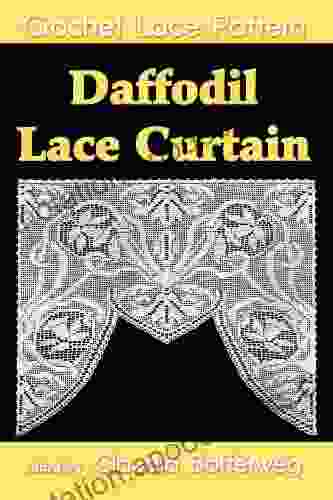
 Ralph Waldo Emerson
Ralph Waldo EmersonUnlock the Elegance of Daffodil Lace: An Immersive Guide...
: A Tapestry of Delicate...
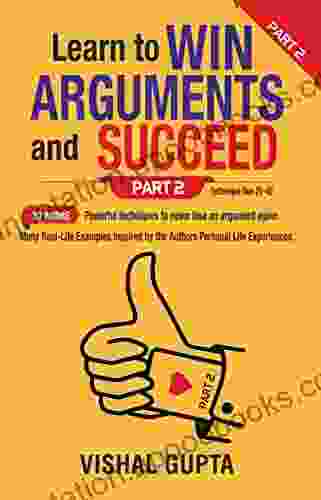
 Gerald Parker
Gerald ParkerNever Lose An Argument Again: 20 Powerful Techniques From...
Are you tired of losing...
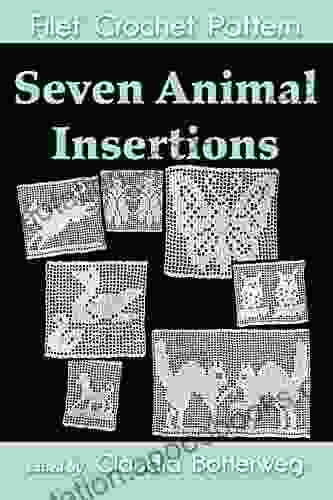
 Xavier Bell
Xavier BellSeven Animal Insertions Filet Crochet Pattern: Embark on...
Welcome to the captivating...

 Eugene Powell
Eugene PowellMagomago in TDS Magomago 12: An Unforgettable Adventure...
Step into the Enchanting World of...

 Marvin Hayes
Marvin HayesSoft Felting Needle Holder Excellence In Reborn Artistry
Unveiling the Secrets of the...
4.6 out of 5
| Language | : | English |
| File size | : | 9248 KB |
| Text-to-Speech | : | Enabled |
| Screen Reader | : | Supported |
| Enhanced typesetting | : | Enabled |
| Word Wise | : | Enabled |
| Print length | : | 240 pages |


